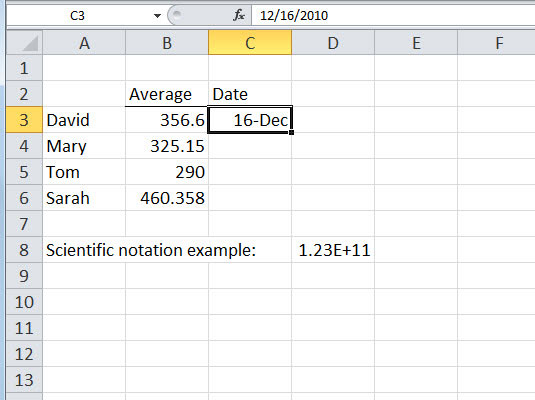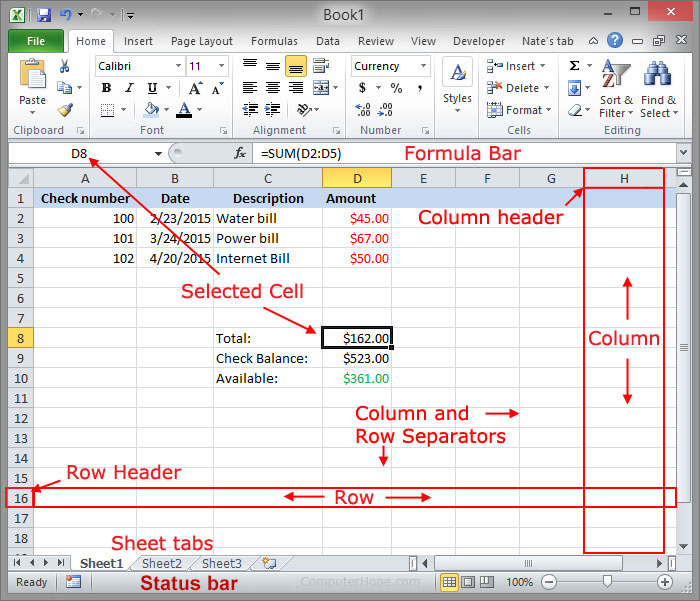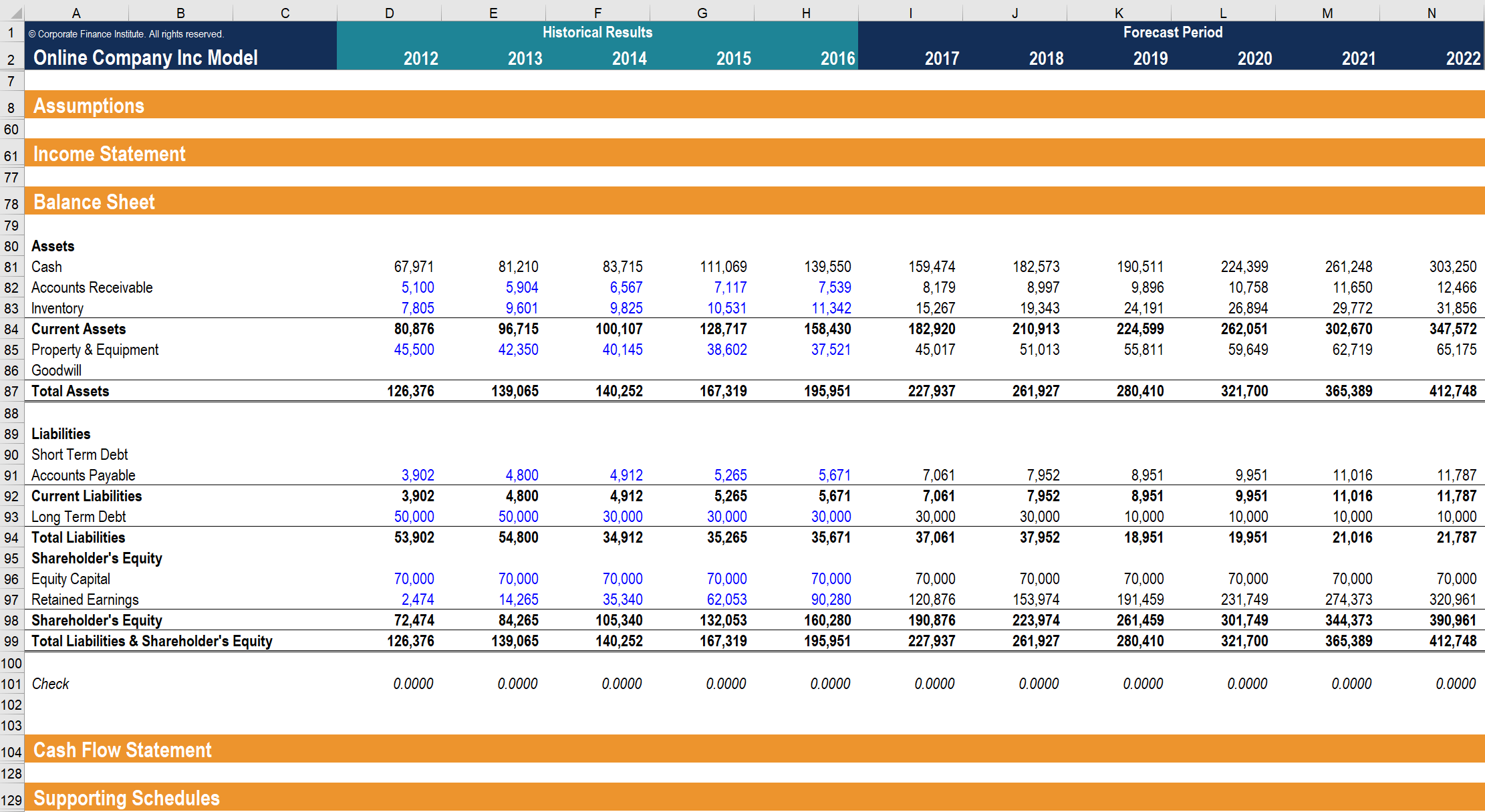
Excel 2010's Three Data Types and Their Default Formats
Excel 2010’s Three Data Types and Their Default Formats
In Excel 2010, the worksheet consists of a grid of columns and rows that form cells. You enter three types of data in cells: labels, values, and formulas.
Labels (text) are descriptive pieces of information, such as names, months, or other identifying statistics, and they usually include alphabetic characters.
Values (numbers) are generally raw numbers or dates.
Formulas are instructions for Excel to perform calculations.
To enter data in a cell in Excel 2010, you select the cell, type the data, and press Enter. Excel moves the cell cursor down one cell. You also can click the Enter button (the check mark) in the Formula bar to enter data. The check mark appears only when you are in the process of entering (or editing) data.
If you want to move the cell cursor one cell to the right after data entry, press Tab or the right arrow key (instead of Enter) to complete the entry.
How Excel aligns the data (by default — you can change it later) depends on what type of data it is:
Label: Excel aligns text to the left side of the cell. If the text is too wide to fit, Excel extends that data past the cell width if the next cell is blank. If the next cell is not blank, Excel displays only enough text to fit the display width. Widening the column displays additional text.
To enter a numerical value or formula as a label, type an apostrophe before it.
Whole value: If the data is a whole value, such as 34 or 5763, Excel aligns the data to the right side of the cell.
Value with a decimal: If the data is a decimal value, Excel aligns the data to the right side of the cell, including the decimal point, with the exception of a trailing 0. For example, if you enter 246.75, then 246.75 is displayed; if you enter 246.70, however, 246.7 appears.
Date: If you enter a date, such 12/16, Dec 16, or 16 Dec, Excel automatically returns the value in your default date format (16-Dec if you haven’t changed it) in the cell, but the Formula bar displays 12/16/2010.
Excel recognizes dates when you enter them in a familiar format.
If a value displays as scientific notation (such as 1.23E+11) or number signs (######), it means the value is too long to fit into the cell. You need to widen the column.









